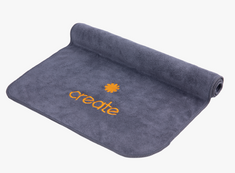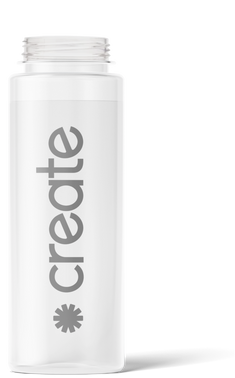The Role Of Creatine Supplements For Muscular Dystrophy
Discover the benefits of creatine supplements for muscular dystrophy. Learn how this supplement may aid muscle strength in individuals.
Creatine supplements have gained attention for their potential to improve conditions related to muscular dystrophy, a group of genetic disorders that cause progressive muscle weakness. By boosting the production of ATP, the primary energy source for muscle cells, creatine may help enhance muscle strength and function in individuals with muscular dystrophy. Studies suggest that creatine can slow muscle degeneration, improve physical performance, and support overall muscle health.
These benefits could significantly improve the lives of those affected by muscular dystrophy. Read on to explore the meaning of muscular dystrophy, discover the different types, and understand how creatine supplements can be vital in managing this challenging condition.
What Is Muscular Dystrophy?
Muscular dystrophy (MD) refers to a group of genetic disorders that cause progressive muscle weakness and degeneration. These conditions primarily impact the muscles responsible for movement, leading to a gradual decline in strength and mobility.
MD is caused by mutations in specific genes that play crucial roles in muscle function. These genetic mutations disrupt the production of proteins essential for maintaining healthy muscle fibers, which results in muscle deterioration over time.
As the condition advances, individuals may experience increasing difficulty with everyday activities, impacting their overall quality of life. Understanding muscular dystrophy's genetic basis and progression is vital for exploring effective management strategies and potential treatments, such as creatine supplements, to support muscle health and functionality.
Types Of Muscular Dystrophy
Muscular dystrophy is a collective term for several genetic disorders, each causing progressive muscle weakness and degeneration. Differentiating between these types is crucial because each type has distinct genetic causes, symptoms, and progression rates, significantly influencing treatment approaches and management strategies.
Duchenne Muscular Dystrophy (DMD)
Duchenne Muscular Dystrophy (DMD) is the most common and severe form of muscular dystrophy, predominantly affecting boys. A genetic mutation in the dystrophin gene causes the absence of dystrophin, a protein essential for muscle function. This absence leads to progressive muscle weakness, difficulty walking, and severe complications such as heart and respiratory issues. Early intervention and management are crucial for improving quality of life and slowing disease progression.
Becker Muscular Dystrophy (BMD)
Becker Muscular Dystrophy (BMD) is similar to DMD but typically presents with less severity and a later onset. This condition results from a mutation in the dystrophin gene that produces a partially functional dystrophin protein. Symptoms include muscle weakness, cramps, and potential heart problems. Although BMD progresses more slowly than DMD, individuals still require ongoing management to address muscle weakness and associated complications.
Myotonic Muscular Dystrophy
Myotonic Muscular Dystrophy is the most common adult form of muscular dystrophy, affecting multiple body systems. There are two types, Type 1 and Type 2, both caused by different genetic mutations. Type 1 results from a CTG repeat expansion, while Type 2 involves a CCTG repeat expansion. Common symptoms include prolonged muscle contractions, muscle weakness, and issues with the heart, respiratory system, and endocrine glands. Proper diagnosis and management are essential for improving quality of life.
Facioscapulohumeral Muscular Dystrophy (FSHD)
Facioscapulohumeral Muscular Dystrophy (FSHD) primarily affects the muscles of the face, shoulder blades, and upper arms. Genetic mutations weaken these muscles. Symptoms often include facial muscle weakness, difficulty raising the arms, and potential hearing loss or retinal issues. FSHD progresses at varying rates, and understanding its impact on daily functioning helps develop effective management strategies for those affected.
How Creatine Works For Muscular Dystrophy?
Creatine works for muscular dystrophy by enhancing the production of ATP, the primary energy source for muscle cells. This boost in energy helps improve muscle strength and function, potentially slowing muscle degeneration and supporting overall muscle health in individuals with muscular dystrophy.
Mechanisms Of Action In Muscle Cells
Creatine converts into phosphocreatine, which is crucial in generating adenosine triphosphate (ATP), the primary energy carrier in cells. Phosphocreatine helps replenish ATP during short bursts of high-intensity activities by donating a phosphate group to ADP (adenosine diphosphate). This replenishment supports muscle contraction and enhances overall muscle performance, which is particularly beneficial for those with muscular dystrophy who experience muscle weakness and decreased energy levels.
Enhancing ATP Production
ATP is essential for maintaining muscle strength and function, especially in individuals with muscular dystrophy. Creatine phosphate donates a phosphate group to ADP, regenerating ATP and ensuring a quick energy supply for muscle cells. This process helps sustain energy levels during muscle contractions and delays fatigue, emphasizing the significance of ATP in supporting muscle performance and health.
Promoting Recovery
Muscular dystrophy causes muscle weakness and increased fatigue, significantly impacting daily activities and quality of life. Recovery from muscle exertion can be challenging, with prolonged fatigue common among patients. Creatine supplementation can help by maintaining higher ATP levels, which delays the onset of muscle fatigue and supports quicker recovery, thereby improving overall muscle function and endurance.
Supporting Muscle Protein Synthesis
Muscle protein synthesis is the process of cells creating new proteins, which is crucial for muscle repair and growth. This process becomes vital in conditions like muscular dystrophy that cause muscle wasting. Creatine enhances muscle protein synthesis by increasing ATP availability, which provides the energy needed for protein production and creates a favorable environment for muscle growth. Thus, it ultimately aids in maximizing muscle mass and combating muscle loss.
Benefits Of Creatine For Muscles
Creatine offers several muscle benefits, including boosting muscle strength, reducing muscle wastage, and enhancing exercise capacity. By increasing ATP production, creatine supports improved muscle performance and endurance, making it a valuable supplement for individuals looking to strengthen their muscles and optimize their physical abilities.
Enhanced Muscle Strength And Function
Creatine is well-known for its ability to enhance muscle strength and function, especially beneficial for individuals with muscular dystrophy. By increasing phosphocreatine stores in muscles, creatine supports quick energy release during physical activity. This boost in energy helps improve muscle performance and function, making it easier to engage in daily tasks and physical exercises.
Reduction In Muscle Wasting
Muscle wasting refers to losing muscle mass and strength, a common issue for individuals with muscular dystrophy. Preventing muscle wasting is crucial for maintaining mobility and quality of life. Creatine supplementation can help reduce muscle wasting by supporting muscle protein synthesis and minimizing protein breakdown, thereby preserving muscle mass and enhancing overall muscle function.
Improved Exercise Capacity And Endurance
Exercise capacity and endurance are vital for individuals with muscular dystrophy, affecting their ability to perform daily activities and maintain overall health. Creatine enhances these factors by providing a quick energy source and delaying muscle fatigue. This improvement in energy levels helps individuals perform physical tasks more effectively and endure longer periods of activity, contributing to better daily functioning.
Potential For Enhanced Quality Of Life
Quality of life in the context of muscular dystrophy includes physical, emotional, and social well-being. Creatine supplementation can significantly enhance overall quality of life by improving muscle strength, reducing muscle wasting, and boosting exercise capacity. These benefits collectively support better physical health, excellent emotional stability, and increased social interaction, contributing to a more fulfilling and active lifestyle.
Challenges And Limitations For Creatine Supplementation
Creatine supplementation for muscular dystrophy faces challenges such as variable responses among individuals and potential gastrointestinal side effects. Additionally, its effectiveness may be limited by the progression of the disease and underlying genetic factors. Monitoring and personalized adjustments are essential to address these limitations effectively.
Individual Variability In Response To Creatine
Not all individuals respond to creatine supplementation in the same way. Genetic factors, age, and the severity of muscular dystrophy can significantly influence the effectiveness of creatine. Some may experience substantial benefits, while others may see minimal improvement. Considering these variables, personalizing the approach to creatine supplementation is essential to maximize its potential benefits for managing muscular dystrophy.
Potential Interactions With Other Medications
Common medications for muscular dystrophy, such as corticosteroids, heart medications, and respiratory aids, may interact with creatine supplementation. These interactions can alter the effectiveness of either the creatine or the prescribed medication, potentially impacting overall treatment outcomes. Careful monitoring and consultation with a healthcare provider are crucial to manage these potential interactions and ensure a safe and effective treatment plan.
Side Effects And Safety Concerns
Creatine supplementation can lead to side effects such as gastrointestinal discomfort, dehydration, and muscle cramping. Concerns about the long-term safety of creatine use, especially in vulnerable populations like those with muscular dystrophy, also arise. Addressing creatine side effects and ensuring ongoing safety through proper dosage and monitoring is essential to minimize risks and effectively support overall health.











